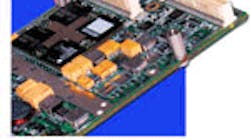Awareness continues to grow over the danger of counterfeit components in the electronics supply chain due to recent government action aimed at curtailing the use of bogus parts in the production of military systems and equipment. The 2012 National Defense Authorization Act (NDAA), signed into law December 31 by President Obama, includes a bipartisan amendment requiring the Department of Defense (DoD), the Department of Homeland Security, and government contractors and their suppliers to detect and avoid counterfeit parts in the military supply chain.
The amendment arose out of Senate Armed Services committee hearings on the subject in early November and came as no surprise to defense and aerospace suppliers who have been watching the situation closely. Tom Sharpe, president of Connecticut-based SMT Corp., an independent distributor of electronic components specializing in military and aerospace markets, says the increased pressure on the military supply chain is a shift in the right direction for independent distributors in particular.
“Since the Senate hearings, there has been even more of a push from the military/aerospace side regarding anti-counterfeiting efforts,” says Sharpe, who testified at the hearings and is a leading voice from the independent distribution sector on anti-counterfeit efforts. SMT sources and authenticates obsolete electronic components for use by military and aerospace markets and has developed a niche as an expert in detecting the latest counterfeit methods in use. “I look at all of these things as positive.”
The NDAA’s anti-counterfeiting amendment includes enhanced inspection and reporting requirements for companies supplying electronic parts or systems that contain electronic parts. It also calls for closer scrutiny by the Homeland Security Department over countries considered to be significant sources of counterfeit parts in the DoD supply chain. Both the DoD and Homeland Security are charged with developing new or enhanced policies and procedures surrounding anti-counterfeit detection and avoidance this year—within six to nine months of the enacted legislation.
